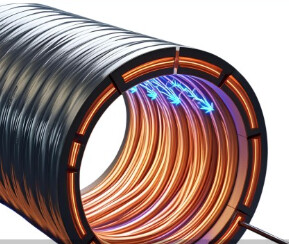Why does current avoid the center of a conductor?

Because of the skin effect, current generally moves away from the center of a conductor.
Changing magnetic fields are induced within the conductor by alternating current (AC) at higher frequencies.
These magnetic fields cause eddy currents, which are currents that are in opposition to the flow of current in the core.
This results in a reduction in the effective cross-sectional area that is used for conduction, which in turn leads to an increase in resistance.
The majority of the current is forced to flow along the outside surface (skin) of the conductor.
When the frequency is low, also known as direct current (DC), the current is dispersed evenly over the cross-section of the conductor
You can also follow us on AutomationForum.co, Facebook and Linkedin to receive daily Instrumentation updates.
You can also follow us on ForumElectrical.com , Facebook and Linkedin to receive daily Electrical updates.